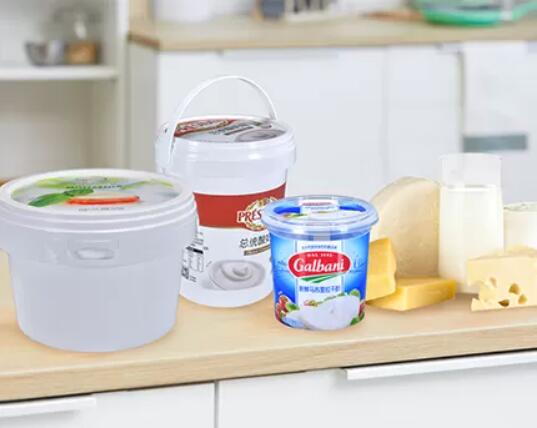Food packaging is an essential component of the food industry, responsible for ensuring food safety, freshness, and quality. However, the increase in plastic waste and the negative impact on the environment has led to the development of new sustainable food packaging solutions. In-mold labeling (IML) is a technology that has revolutionized the food packaging industry. IML food packaging is becoming increasingly popular, and for good reason. In this article, we will explore the benefits of IML food packaging and why it is considered the future of sustainable food packaging.
What is IML Food Packaging?
In-mold labeling (IML) is a technique where a label is placed inside a mold and fused with the packaging material during the injection molding process. The label becomes an integral part of the package, and the graphics and text are permanently embedded in the material. IML food packaging offers many advantages over traditional food packaging methods, such as direct printing and labeling. IML technology provides a superior graphic quality and a more durable, tamper-evident package.
The Benefits of IML Food Packaging
Sustainability: One of the most significant advantages of IML food packaging is its sustainability. IML food packaging is made of polypropylene (PP), which is a 100% recyclable material. PP is also lightweight, which means that it requires fewer resources to transport, reducing its carbon footprint. Additionally, the in-mold labeling process eliminates the need for separate labels and adhesives, reducing waste and making the packaging more sustainable.

Product Protection: IML food packaging is designed to protect the product inside. The package is airtight, which helps to maintain the freshness and quality of the food. The in-mold labeling process also provides a more robust, tamper-evident package that is difficult to open without leaving evidence of tampering. This is especially important for food products that are sensitive to contamination.
Superior Graphic Quality: IML food packaging offers superior graphic quality, with high-resolution images and text. The labels are fused with the packaging material, which means that they will not fade or peel off over time. The packaging can also be customized with unique designs and colors, helping to differentiate the product from its competitors.
Cost-Effective: Although the initial investment for IML food packaging can be higher than traditional packaging methods, it is a cost-effective solution in the long run. IML food packaging requires fewer materials, and the labeling process is more efficient than traditional methods, reducing production costs. Additionally, the durability of IML food packaging means that the product inside is less likely to be damaged during transport or storage, reducing the risk of waste and returns.
The Future of Sustainable Food Packaging
The food industry is under increasing pressure to reduce its environmental impact and adopt more sustainable practices. IML packaging for food industry is an excellent example of sustainable food packaging that offers many benefits over traditional methods. As consumers become more aware of the impact of plastic waste, there is a growing demand for sustainable packaging solutions. IML food packaging is a step in the right direction towards achieving a more sustainable future.
Conclusion
In-mold labeling (IML) technology is revolutionizing the food packaging industry, providing a more sustainable, durable, and cost-effective solution. IML food packaging offers many advantages over traditional packaging methods, including superior graphic quality, product protection, and sustainability. As the demand for sustainable packaging solutions grows, IML food packaging is set to become the future of sustainable food packaging.
Previous: How to Find A Tabletop Game Manufacturer for Affordable Tabletop Game
Next: Frozen Food Pouches
Copyright:@2020-2021
Comments Please sign in or sign up to post.
0
0 of 500 characters used